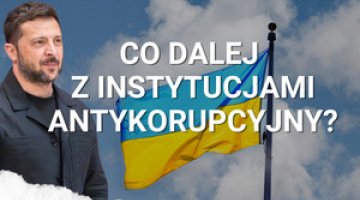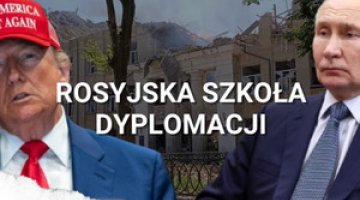Pro-Russian ‘separatism’: a tool to compel Ukraine to federalisation
On 6 April groups of pro-Russian activists held demonstrations in Donetsk, Kharkov and Lugansk, which ended with the seizure of government buildings. These demonstrations were no more numerous than those of the previous few weeks (numbering from a few hundred to two thousand attendees), but this time the protesters encountered almost no resistance from security forces. The separatists in each region appointed a “new political representation” which was supposed to prepare to hold a ‘referendum’ on self-determination. The Ukrainian government has accused Moscow of provoking the events in the eastern regions of the country. For its part, Russia urged Kyiv not to use force against the separatists, and stressed the need for international talks on a new constitutional system for Ukraine. The result of this was Ukraine’s agreement to hold joint negotiations next week with Russia, together with the EU and US. The government in Kyiv has managed to clear some of the occupied buildings, by the use of force in Kharkov, and as a result of negotiations in Lugansk and Donetsk, but they still have no control over the situation in the latter two cities, and the situation is still very tense there.
All indications are that the events in eastern Ukraine are part of the implementation of a scenario prepared in Moscow, the aim of which is to prevent the presidential elections being held on 25 May, and to force the federalisation of Ukraine by granting significant autonomy to the eastern and southern regions. The events of recent days would not have been possible without Russian support for the weak separatist forces in the region, which on their own cannot count on massive public support. In turn, the passive attitude of the police indicates that the government in Kyiv is not able to fully control the regional police forces, and that some of the local elites are playing their own political games against Kyiv.
The separatists’ activities
The operations to occupy the government buildings proceeded similarly in all three cities. The attacks were made by relatively small (between 200 and 300 people), but well-organised groups of separatists who broke into the regional administration buildings in Kharkov and Donetsk, as well as the headquarter buildings of the Security Service of Ukraine (SBU) in the latter city and Lugansk. The pro-Russian activist groups also made similar demands, which shows that the action was pre-planned and implemented consistently with a previous plan. The separatists proclaimed the creation of the ‘People’s Republic of Donetsk’ and ‘the People’s Republic of Kharkov’; in Lugansk, they withdrew their obedience to the existing authorities and announced the creation of their own government. The separatists in all three cities also announced coordinated efforts to arrange a referendum on the regions’ self-determination by 11 May. The separatists in the regional administration building in Donetsk are armed and strengthening their defences, and those in the SBU headquarters in Lugansk have surrounded it with barricades. In Kharkov and Mykolaiv, where clashes broke out on the night of 7/8 April, the situation is more stable.
The government’s response
The government in Kyiv is using different instruments to restore order in the cities, both force (on a limited scale) and negotiations. Special forces militia from other regions of Ukraine have been sent there, as have representatives of the government’s institutions of force. As a result, in the early hours of 8 April, Interior Ministry ‘Jaguar’ troops retook the regional administration building in Kharkov, and another special unit threatened to storm the SBU headquarters in Donetsk; it was cleared during negotiations between the separatists and the politicians. On 9 April the head of the Interior Ministry announced that the SBU building in Lugansk would be recovered within 48 hours “as a result of negotiation, or by the use of force.”
The events of recent days have revealed the passivity of the Interior Ministry’s local forces, which did not respond to the government buildings’ occupation, as well as Kyiv’s lack of control over the local security organs. This suggests that they are working with the region’s political elites, and have been infiltrated by Russian special services. It also seems that the situation could not have escalated without the tacit agreement of Rinat Akhmetov, the most influential oligarch in the Donbas. His involvement in the negotiations with the authorities, effectively on behalf of the separatists, shows that he is interested in winning a form of autonomy within Ukraine for this region, which would give some guarantees of security for his assets.
Russia’s reactions
Moscow reacted to the events in eastern Ukraine mainly through statements by the Ministry of Foreign Affairs and its minister Sergei Lavrov. Their content can be reduced to two main elements. Firstly, they include appeals to the Ukrainian authorities to refrain from using force against the pro-Russian separatists. Minister Lavrov warned of this on the evening of 7 April during a telephone conversation with the Ukrainian Foreign Minister Andriy Deshchytsa. There was a particularly sharp and dramatic tone to the Foreign Ministry’s statement issued on the night of 7/8 April on the Ministry’s official website on Facebook, which expressed concern at the introduction of security forces into eastern Ukraine, allegedly including the Greystone US military private corporation. The statement described this as a “provocation” which threatens “the rights, freedoms and lives of Ukrainian citizens as well as the stability of Ukraine”, and warned of the possible outbreak of civil war. Secondly, the Foreign Ministry’s statements emphasised the need for urgent political dialogue with representatives of Ukraine’s south-eastern regions on constitutional reform, in accordance with Russian demands. In particular, Minister Lavrov raised this during his call on 7 April with the foreign ministers of the US, Germany and Ukraine. At a press conference on 8 April, Lavrov said that Russia is ready to agree to US proposals to arrange a meeting within 10 days with representatives of Ukraine, the US and the EU on de-escalating the situation and constitutional reform in Ukraine. However, he set two conditions: first, on determining the formula and composition of the participants in the meeting, which should also include representatives of Ukraine’s south-eastern regions (Lavrov suggested that this could include some of the candidates running for president); and second, the government in Kyiv should present a draft of the new constitution of Ukraine in advance, and subject it to broad consultations.
By initiating and supporting the separatist activity in eastern Ukraine, Russia is using it as a means to raise the pressure on both the government in Kyiv and the major players in the West. The aim is to force them to accept most of Russia’s demands regarding the so-called federalisation and the neutral (non-aligned) status of Ukraine. Russia apparently assumes that a political agreement on this issue can be reached by the end of this month. Additional pressure from Moscow comes from the threat of military invasion under the pretext of protecting the population of south-eastern Ukraine, which can be perceived (albeit indirectly) in communiqués and statements by Russian representatives. This was most clearly stated in a statement on 8 April by Vyacheslav Nikonov, the head of the State Duma’s Educational Committee and head of the Russkiy Mir state foundation, who is close to the Kremlin.
Forecast
In the coming days we may expect to see further attempts to destabilise south-eastern Ukraine by Russian-inspired separatists, as well as attempts by Kyiv to negotiate to clear the occupied buildings. It seems that for the time being, it is less likely that the central authorities will take active measures to recover the government buildings, although this option is still open. Kyiv is unwilling to shed blood, fearing that this would be a pretext for an invasion by Russian troops. Ukraine has agreed to participate in the multilateral negotiations with the US, EU and Russia to resolve the conflict, but Kyiv’s willingness to accept the key Russian conditions (including federalisation and the postponement of presidential elections to a later period) is currently very limited. The Ukrainian side has consented to talks with the intention that they will mainly address a return to the status quo ante in the east of the country. We may expect Russia to continue its policy of blackmail against Ukraine and the West, including threats of military intervention in order to compel the parties to a de facto acceptance of its demands.





